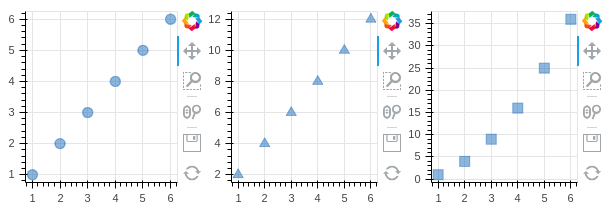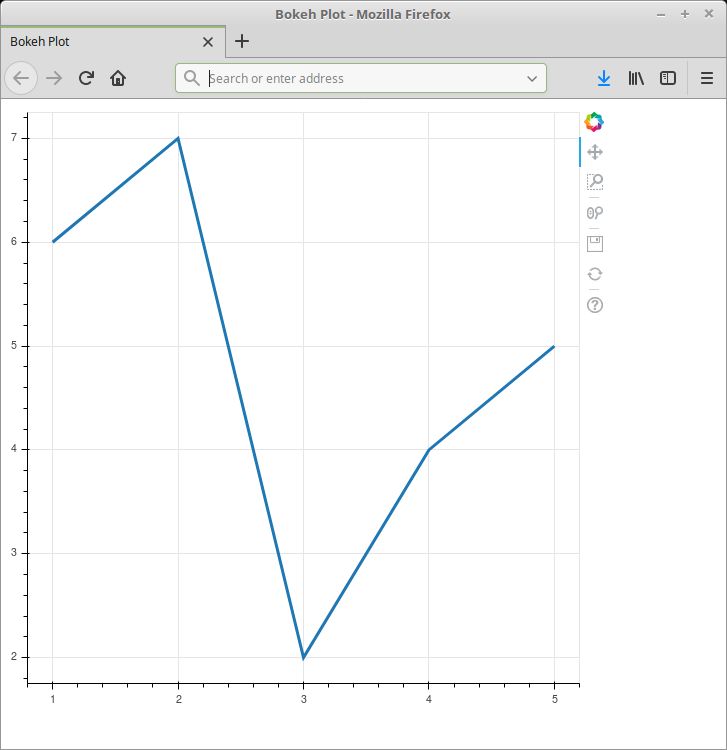

""" A multi-index series needs to be split into groups.

""" return ĭef preproc_multi_index_series(srs: pd. """ A single-index series just needs to be reset and given it's name. Raise ValueError def preproc_single_index_series(srs: pd. columns) = set(), 'Expecting three column names: (val, upper, lower)' #print('Multi-index dataframe') return preproc_multi_index_df(data) #print('Multi-index series') return preproc_multi_index_series(data)Īssert set(data. #print('Single index series') return preproc_single_index_series(data) """ Dispatch input-specific pre-processing functions for various potential data formats.īokeh expects a DataFrame (without index) as input to ColumnDataSource. Output_file ( "bokeh_barchart_example.Def preproc_dispatcher(data: Union) -> Dict: pivot_table (data =train_df, values = 'PassengerId', index = 'Sex' ,Ĭolumns = 'Survived', aggfunc = 'count' )Ĭhart_values = list (table. To show the charts, we will use the hplot function, which creates multiple plots on the horizontal. This should be passed to the stack parameter, and the other key should be passed to the label parameter. For the stacked chart, we will set through which variable the chart should be stacked, in this case, the survival key. For the non stacked chart, we will pass two variables to the label parameter, and Bokeh will create four bars, for each combination that is possible with the keys on the label. For this function, we will pass the created Dict (that we called chart_data), indicate which values should be aggregated (the quantity key on the Dict), which key is going to be the label and the title. Then we will use the Bar class that we imported to create two charts (one stacked and one not stacked). So, if the first value on the quantities list refers to female non survivors, the first item in the gender list needs to be “female” and the first item in the survival List needs to be “not survived”, and so on for the remaining values of the lists. for Effective Presentation While plotting multiple plots, 39 Plotting with different Data. The “gender” and “survival” lists need to indicate to which category these values belong. Interactive web plotting for Python using Bokeh Kevin Jolly. The List will contain the count of “female”, non survivors and survivors, in this order, and then “male”, in the same order. Then, we need to transform the values in a Python List. Let’s use Pandas’ pivot_table to calculate that. We will need the quantity of survivors and non survivors for each gender.
#Python bokeh have multiple plots how to
Additionally, we will create multiple charts, and then we can learn how to create both simple bar charts and stacked bar charts.įirst, let’s define the values we need. use with Python plotting programs like Bokeh, Matplotlib, HoloViews, and Datashader. Let’s see the Titanic survival by gender example with Bokeh. There are also external libraries that have many extra colormaps. Bar Chartsĭata for a Bar Chart in Bokeh is organized in Python Dictionaries, composed of Lists with the values to be used on the chart. Bar charts in Bokeh works a little differently. Nice, isn’t it? Now let’s create some bar charts. circle (ages, fare, size = 5, alpha = 0.5 )

Output_file ( "bokeh_scatter_example.html", title = "Bokeh Scatter Plot Example" )įig2 = figure (title = "Bokeh Scatter Plot Example", x_axis_label = 'Age' ,įig2. Let’s set an alpha value for transparency and the size of the points: Then, we will configure the output file and the figure, but now we will use the circle function from the figure to create the plot points. Like the first example, we will set the data that will be used for the plot, extracting them from the Titanic Dataset. Now, let’s see how we can create a scatter plot with Bokeh, like the one we created on the previous post.

This interactivity is really nice when you want to create a web application that involves charts. made with Bokeh 1 from otting import figure, outputfile, show 2. Note that you can pan the chart, save, zoom in with the mouse scroll. To make multiple circles, just enter their coordinates in a list for each axis. line (x, y ) # Show results, similar to matplotlib Output_file ( "bokeh_example_1.html", title = "Bokeh Line Chart Example" ) # Create the figure and define some propertiesįig = figure (title = "Bokeh Line Chart Example", x_axis_label = 'x', y_axis_label = 'y' ) # Add the lineįig. X = range ( len (y ) ) # Configuring plot output file plotting import figure, output_file, show


 0 kommentar(er)
0 kommentar(er)
